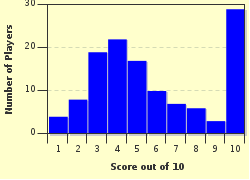Quiz Answer Key and Fun Facts
1. The original Mission Control Center, used from 1960 to 1964, was located on the grounds of which U.S. military facility?
2. "The Trench", the first row of mission controllers, were considered among the most important people in Mission Control. During the Mercury flights, which of the following controller positions was NOT located in "The Trench"?
3. The Booster Officer (BOOSTER), the engineer responsible for monitoring the performance of the rockets on which the astronauts ride to space, traditionally represented which NASA facility?
4. During the Apollo era, the Retrofire Officer (RETRO) was responsible for which of the following functions?
5. During the Apollo era, the CONTROL and TELMU officers were responsible specifically for the lunar module.
6. During the space shuttle era, the DPS Officer was responsible for which of the following systems?
7. A position created during the era of the International Space Station, the TOPO was responsible for which function?
8. The Capsule Communicator (CAPCOM) was traditionally another astronaut who relayed instructions from Mission Control to the crew. Which astronaut and future moon-walker served as CAPCOM when Apollo 11 landed on the moon on July 20, 1969?
9. The Flight Director (FLIGHT) was the leader of the flight control team, and had overall responsibility for mission operations. Which of the following people was the first person to serve as FLIGHT and helped shape Mission Control into the famed organization it became?
10. Perhaps the best-known member of Mission Control was Flight Director Eugene Kranz. Which of the following statements about Kranz is false?
Source: Author
cag1970
This quiz was reviewed by FunTrivia editor
bloomsby before going online.
Any errors found in FunTrivia content are routinely corrected through our feedback system.

